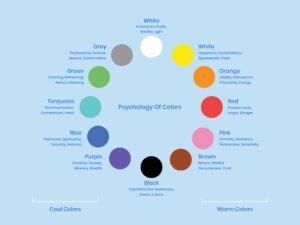Ever tossed and turned long after the sun set, feeling like your mind was still buzzing with activity? You’re not alone. Our modern world, bathed in artificial light, can wreak havoc on our natural sleep-wake cycle, leaving us feeling exhausted and sluggish. But what if there was a way to harness the power of light to promote restful sleep? There is! The color of the light we expose ourselves to before bed can have a profound impact on our ability to fall asleep and stay asleep.

Image: www.nectarsleep.com
This article delves into the fascinating world of light and sleep, revealing the secrets of what LED light color helps you sleep best. We’ll explore the science behind different light colors, learn how they affect our biological clocks, and uncover practical tips for optimizing your sleep environment with the right light.
Understanding the Power of Light and Sleep
Our bodies are designed to operate on a natural circadian rhythm, a 24-hour cycle that regulates our sleep-wake patterns, hormone production, and other bodily functions. This internal clock is synchronized with the external light-dark cycle – sunlight during the day and darkness at night.
When we expose ourselves to artificial light, especially in the evening, we disrupt this delicate balance. Blue light, the type emitted from electronic devices like smartphones, tablets, and computer screens, is particularly disruptive.
The Spectrum of Light Colors and Sleep
The color of light is determined by its wavelength. Blue light has shorter wavelengths, while red light has longer wavelengths.
-
Blue light is known for its stimulating effects. It suppresses melatonin production, a hormone essential for sleep regulation. This is why spending time on your phone before bed can make it harder to fall asleep.
-
Red light, on the other hand, is more calming. Studies have shown that red light can promote melatonin production and improve sleep quality.
-
Warm White light is a blend of colors that includes both red and blue tones. Warm white light is often used for general lighting, but it can still contain blue light that can disrupt sleep.
Choosing the Right LED Light Color for Sleep
So, what LED light color can actually help you sleep? The answer is a warm white light that is low in blue light content.
Here’s how to choose the right LED light for your bedroom:
- Look for warm white bulbs: These have a color temperature of around 2700-3000 Kelvin (K). Avoid bulbs with higher color temperatures (4000K or more), which emit more blue light.
- Consider amber or red bulbs: These colors are even more effective at promoting sleep, but they may not be as bright as warm white bulbs.
- Use dimmers: Dimming your lights can help reduce the amount of blue light emitted.

Image: medium.com
Creating a Sleep-Friendly Lighting Environment
Here are some practical tips for optimizing your sleep environment:
- Avoid blue light exposure at least 1-2 hours before bed: This means putting away your phone, tablet, and computer screen. If you must use these devices, consider using a blue light filter app or adjusting your screen settings to reduce blue light emission.
- Use warm white light bulbs in your bedroom: Make sure your bedside lamps and other bedroom lights use warm white bulbs.
- Consider using a nightlight: If you need a little light in your room at night, a red or amber nightlight can be a great option.
- Avoid bright lights in the bathroom: Use a dim light or a nightlight in your bathroom to avoid disrupting your sleep cycle.
- Create a calming bedtime routine: This could include taking a warm bath, reading a book, or listening to relaxing music.
Expert Insights on LED Light and Sleep
Dr. Elizabeth Loftus, a world-renowned sleep expert, emphasizes the importance of creating a consistent sleep-wake cycle and avoiding blue light exposure in the evening. She recommends utilizing “red light therapy” in the evening for 15-30 minutes to promote melatonin production and enhance sleep quality.
What Led Light Color Helps You Sleep
Final Thoughts
The color of your LED lights can significantly impact your sleep quality. By using warm white LEDs with low blue light content, dimming your lights before bed, and avoiding blue light exposure in the evening, you can create a sleep-friendly environment that promotes restful sleep.
Remember, prioritizing a good night’s sleep is an investment in your overall health and well-being. It’s time to shed the blue light and embrace the warm glow of a restful slumber!






